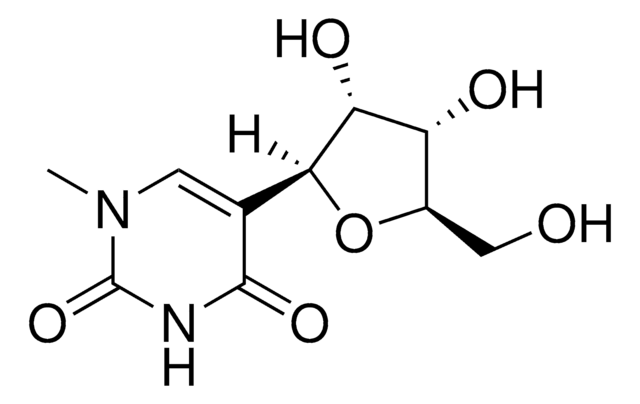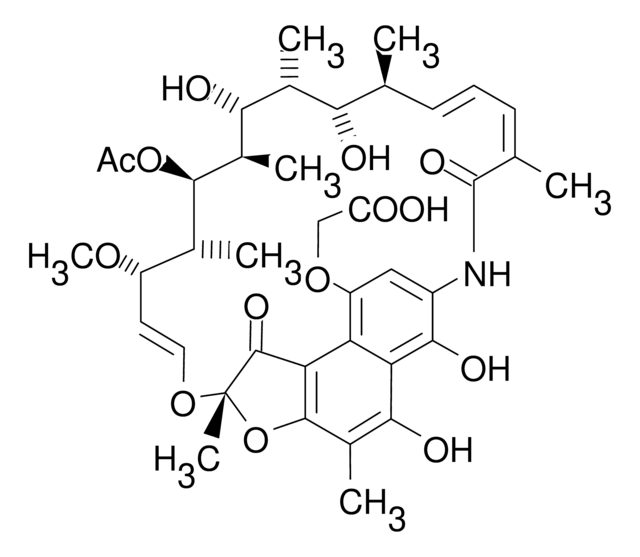SMB00912
Pseudouridine
≥98% (HPLC)
Sinonimo/i:
Pseudouridine, β-Pseudouridine, ψ-Uridine, 5-(β-D-Ribofuranosyl)uracil
About This Item
Prodotti consigliati
Origine biologica
synthetic (chemical)
Livello qualitativo
Saggio
≥98% (HPLC)
Forma fisica
powder
PM
244.2
Colore
white to off-white
Punto di fusione
222 °C ((432 °F ))
Solubilità
water: soluble
Temperatura di conservazione
2-8°C
InChI
1S/C9H12N2O6/c12-2-4-5(13)6(14)7(17-4)3-1-10-9(16)11-8(3)15/h1,4-7,12-14H,2H2,(H2,10,11,15,16)/t4-,5-,6-,7+/m1/s1
PTJWIQPHWPFNBW-GBNDHIKLSA-N
Categorie correlate
Descrizione generale
Applicazioni
Caratteristiche e vantaggi
- High-purity compound suitable for a wide variety of research applications
Altre note
Codice della classe di stoccaggio
13 - Non Combustible Solids
Classe di pericolosità dell'acqua (WGK)
WGK 3
Punto d’infiammabilità (°F)
Not applicable
Punto d’infiammabilità (°C)
Not applicable
Certificati d'analisi (COA)
Cerca il Certificati d'analisi (COA) digitando il numero di lotto/batch corrispondente. I numeri di lotto o di batch sono stampati sull'etichetta dei prodotti dopo la parola ‘Lotto’ o ‘Batch’.
Possiedi già questo prodotto?
I documenti relativi ai prodotti acquistati recentemente sono disponibili nell’Archivio dei documenti.
Il team dei nostri ricercatori vanta grande esperienza in tutte le aree della ricerca quali Life Science, scienza dei materiali, sintesi chimica, cromatografia, discipline analitiche, ecc..
Contatta l'Assistenza Tecnica.







